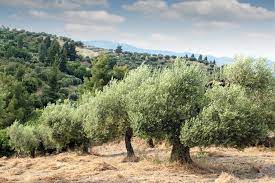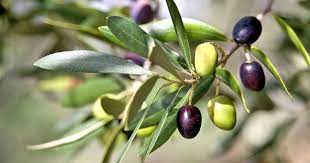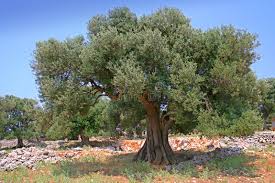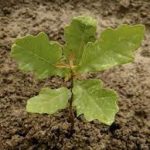GROWING OLIVE TREES – CARE & PLANTING
Learn the basics, and get advice on pruning and harvesting and overwintering olive trees inside. The earliest evidence of their existence dates back to the time of ancient Greece Olive trees date back to ancient Greece. They are among the oldest cultivated trees in the world. They are appreciated not only for their tasty fruit but also for their numerous decorative qualities. With their silvery leaves, gnarled trunks and clusters of white, fragrant spring flowers, the trees stand out as stunning garden focal points during every season.

Though they do best in a sunny Mediterranean climate like those located on the California coast, you can plant olive trees nearly anywhere, provided you keep them safe from harsh winter weather. It is possible to plant olive plants in pots and bring them inside before temperatures drop to freezing. The dwarf varieties that are no more than 6 feet tall are the best for this task.

If the fruit doesn’t matter in your life, you can find plenty of fruitless olive trees to pick from that provide all the elegance of the olive tree but without the mess.
OLIVE TREE BASICS
Botanical name:
Olea europaea
Common names:
European olive tree, common olive tree
Plant type:
An evergreen tree that bears fruit or is fruitless.
Climate conditions:
Olive trees thrive best in areas that have dry, hot summers and mild, cool winters. To bear fruit, they require two months of cool temperatures that are optimally between 40 degrees F and 50 degrees F. However, frigid winter weather (below 20 degrees F) could cause damage to or even kill trees if the tree is not adequately protected.
Rate of growth:
Slow, around 1 to 2 feet per annum.
Flowers:
Small yellow and white flowers bloom in the spring.
Foliage:
Feather-shaped with a grey-green upper and a lighter silvery white underneath.
Fruit:
Most fruit (or drupes) start green and change to a dark-purple hue when fully mature; however, they differ in shape, size, oil content, and taste. Olive tree cultivars that are fruitless have flowers but no fruit.
Lifespan:
More than 150 years old The trees that have lived for more than 1,000 years aren’t familiar.
PLANTING OLIVE TREES
The best time to plant
The ideal moment to start planting is in the spring when the threat of frost has passed. Newly planted trees are vulnerable to frost-related damage in the first winter. Therefore the fall planting process should be undertaken in areas where winter temperatures don’t drop below 30 degrees F. Refrain from planting during the summer heat.
Planting where:
Plant in full sunshine (8 at least a day) in a protected area away from areas with paved surfaces to prevent stains caused by fallen fruit (unless it is an unfruitful variety). Avoid planting in low places where standing water is accumulating. Olive trees aren’t able to survive if planted in soil that is flooded.
What to do when you plant
Make a hole roughly the same in size as the root ball but slightly smaller so that you can see that the ball’s surface will be about a foot above the ground. Do not add compost or organic matter to the planter hole. An olive tree must adjust to its home soil for solid root growth.
Pollination:
Most olive trees can be self-fertile and produce flowering males and females on one tree. But, you can increase fruit yield by placing a tree of a different type nearby and allowing the trees to cross-pollinate.
OLIVE TREE CARE & PRUNING
Watering:
Olive trees are very drought-resistant once they are established. However, for optimal blossoming and fruit development, you must water them often during the growing season, mainly if you live in a dry, hot climate.
Summer and spring:
Water newly planted trees thoroughly two or three times per week, using an irrigation system that includes a soaker hose or drip irrigation. Established trees (5-7 years old) may be watered less often, perhaps every couple of weeks, so that the soil can dry between the waterings.

Winter and autumn: Cut back on watering. No additional watering might be required in the event of rain and the amount of rainfall.
Soil:
Any well-drained soil can be used. Don’t plant in clay or clay soils with a lot of clay.
Amendments & Fertilizer:
Olive trees aren’t heavy feeders, and fertile soils can hinder the production of fruits. However, olive trees growing in soils deficient in minerals might benefit from regular feeds using a balanced fertilizer with nitrogen levels of a minimum of 10. To help conserve soil moisture and prevent weed growth, apply an organic mulch to the tree, putting it just a few inches from its base.
Pruning:
Olive trees are tolerant of pruning. However, the amount of pruning, as well as the methods that you choose to use, will often be based on whether your main goal is to increase fruit production or to improve the aesthetics. The Mediterranean Garden Society will show you how to prune young trees to create the desired form, revive old trees and carefully prune mature trees to ensure more fruit development and easier harvesting. To ensure your tree’s health, remove dead or diseased branches, and cut off suckers that grow at the bottom of the tree.
Remember that olive trees can produce fruits on previous branches. Therefore, if you want to harvest fruit, trim lightly to open the canopy and allow more the amount of light that can reach it.
Harvesting olives:
It is possible to harvest olives when they’re still green or when they are fully ripe in the late fall, depending on the method you choose to utilize them. Most olives that are picked fresh (fully mature ones) are bitter and must be dried before eating, either through bringing or sun drying.
As with the apple tree, olive trees are an alternative, So don’t be shocked to see your tree produce an abundance of olives in one year and an unsatisfactory crop in the following. Young olive trees may not start optimally bearing fruit until around 4-5 years old, and they will continue to grow from to.
Pests and diseases:
Be on the lookout for verticillium wilt, olive fruit flies, olive knots, and black scale. This is one of the enormous insects that can be found on fruit-bearing trees. It can cause severe damage to the olive crop by placing eggs underneath the surface of the fruits. (See more details on the University of California Agriculture olive fruit flies.)
GROWING OLIVE TREES INDOORS
If you reside in a cold climate and olive trees aren’t likely to thrive outside in winter, and you want to grow your olive tree in the form of a container that can be moved indoors is an ideal option (although your olive tree is unlikely to produce the fruit). Here are some suggestions for growing an olive tree successfully inside:
It should be placed in a place with at least six hours of sunlight per day, like windows facing south. Since olive trees belong to the Mediterranean, they can withstand dry indoor air and don’t require more humidity.
Select a dwarf olive tree type that isn’t higher than 6 feet. You can trim your tree if necessary to reduce its Height or even make it bonsai.
Place your plant in a big container with good drainage, and then use a potting mix that drains quickly like a cactus pot soil.
I was using the slow-release fertilizer once every year, during the spring and mid-summer, using the slow-release fertilizer.
Before putting your tree outside for the first time in spring, ensure that the danger of frost is gone and allow it to adjust through gradual exposure to more sunlight.
VARIETIES OF OLIVE TREES
MISSION OLIVE
MANZANILLO OLIVE
MAJESTIC BEAUTY(r) FRUITLESS OLIVE
SWAN HILL FRUITLESS OLIVE
ARBOSANA OLIVE
FRANTOIO OLIVE





